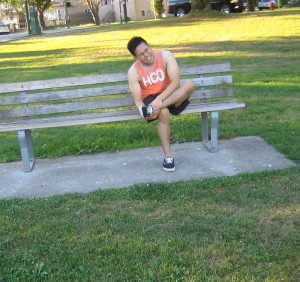Chronic ankle instability involves recurrent giving away of the external side of the ankle. The condition often develops after repeated ankle sprains. Generally, the giving away occurs while walking or engaging in other activities but can also occur while standing.
Individuals with chronic ankle instability often end up with the following:
- Persistent swelling and discomfort
- Repeated turning of the ankle especially on uneven terrain or when engaging in sports
- Tenderness or pain
- Ankle feels unstable or wobbly
What are the causes?

Chronic ankle instability typically forms after an ankle sprain that has not fully healed or completely rehabilitated. If the ankle is sprained, the ligaments are torn or stretched. The ability to balance is often affected.
Take note that proper rehabilitation is required to strengthen the muscle surrounding the ankle and retrain the ankle tissues that affect balance. Unable to do so will lead to recurrent ankle sprains.
Repeated cases of ankle sprains often cause chronic ankle instability. For every sprain that occurs, it leads to further weakening of the ligaments, resulting to increased instability and likelihood for additional issues in the ankle.
Management of chronic ankle instability
The treatment for chronic ankle instability depends on the outcome of the test and examination as well as the activity level of the individual. The conservative measures include:
- Bracing – an ankle brace is used to provide support to the joint and prevent it from turning. Additionally, it also helps prevent additional sprains.
- Medications – non-steroidal anti-inflammatory drugs (NSAIDs) might be given to minimize the inflammation and pain
- Physical therapy – this involves a variety of treatment options and exercises to strengthen the ankle, improve range of motion and balance as well as retrain the muscles.
Do I need surgery?
In some instances, the doctor might suggest surgical intervention based on the severity of the instability or if there is poor response to conservative measures.
Surgery typically involves repair or reconstruction of the damaged ligaments. The doctor will choose the ideal procedure based on the degree of instability and activity level. As for the recovery period, it tends to vary depending on the procedure performed.
Disclaimer / More Information
The information posted on this page on chronic ankle instability is for learning and educational purposes only. To learn to recognize the indications, register for first aid training at one of our training centers located throughout Canada. The training centers are in Edmonton, Calgary, Vancouver, Kelowna, Saskatoon, Victoria, Surrey, Mississauga, Winnipeg, Red Deer, Toronto, Ottawa and Halifax.
